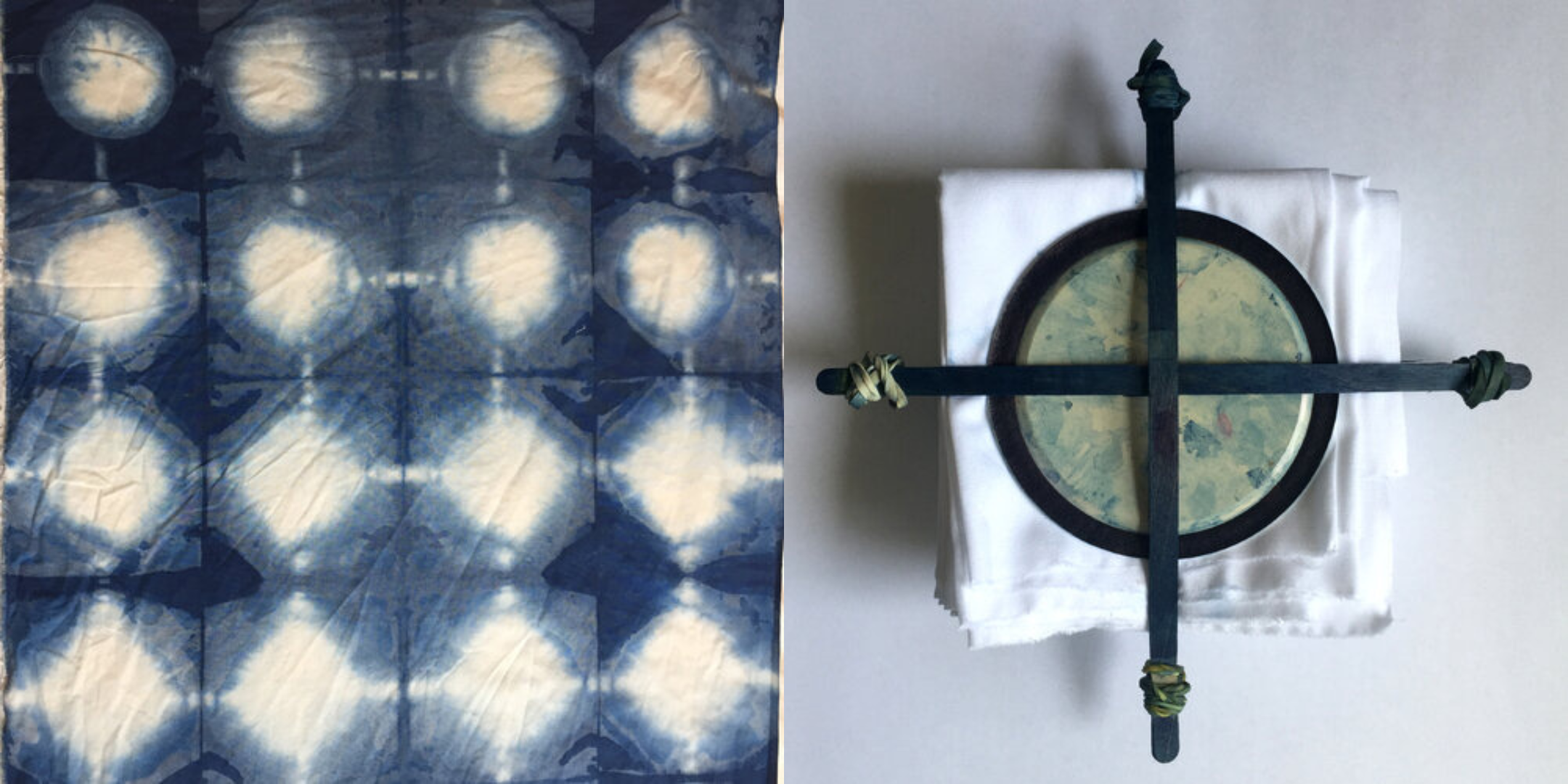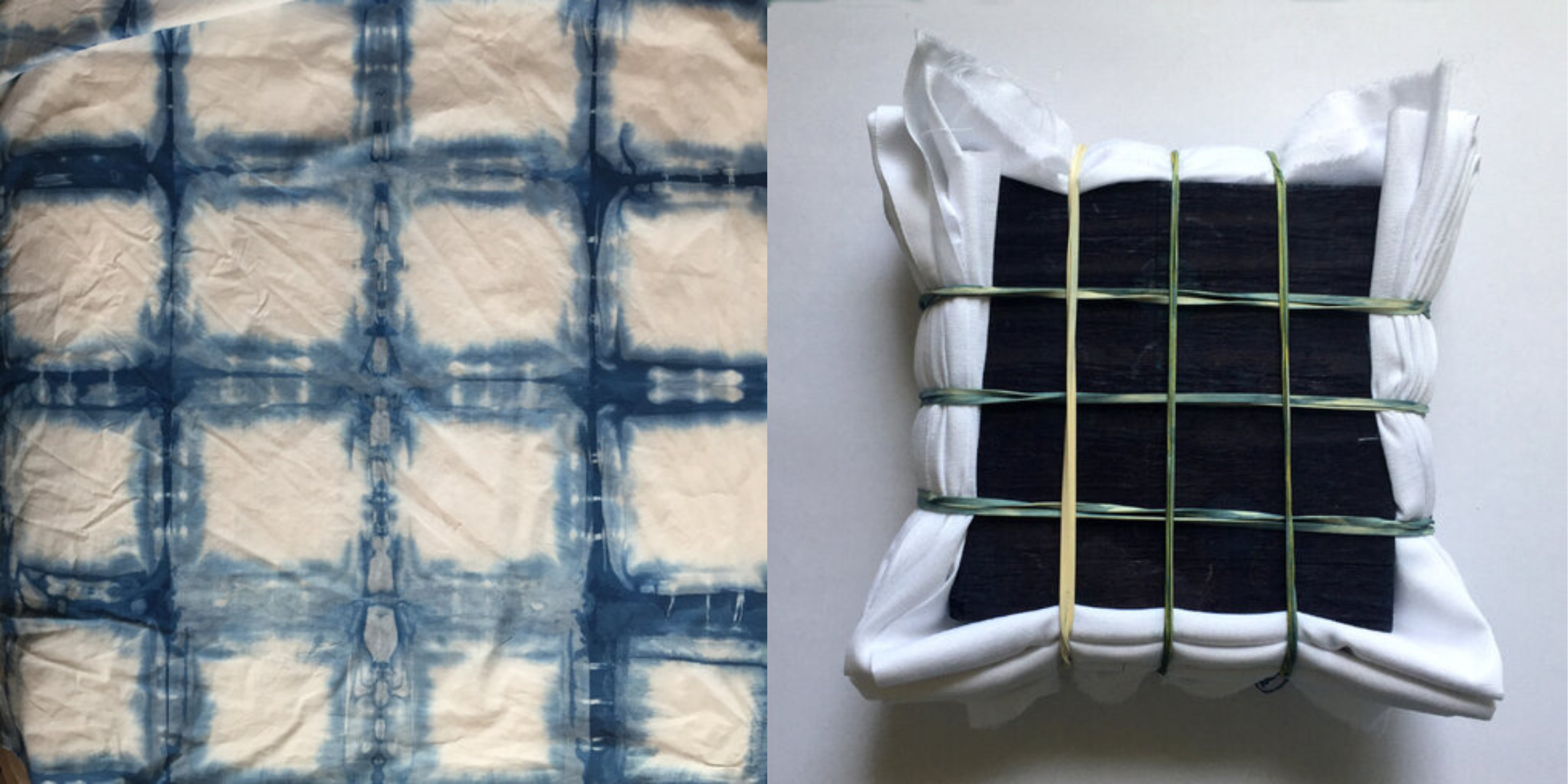Shibori patterns: Itajime and Indigo
May 06, 2021
Itajime is the shibori process of folding fabric and then clamping it between boards or sticks. Traditionally these folding techniques were used with indigo dye.
Shibori , is the Japanese word for manipulating fabric before dyeing (the word is derived from ‘Shiboru’, which means to wring, squeeze and press. The technique in Japan dates back to between 6-8th century, and most likely were learned from the Chinese. Country people used the techniques to pattern hemp and cotton fabrics, whilst silk was used for the higher classes.
There are five different ways of creating designs: tied resist; stitched resist; arashi (pole wrapped); itajime (folded and bound), and tesuji (pleated and bound).
Indigo is a natural dye and it almost has magical qualities because the fabric turns from green to blue as it oxides when it is removed from the indigo dye bath. This oxidizing process is what helps the dye adhere itself to the cotton fibres.
Natural indigo is obtained from a variety of plants, the most widely used one being indigofera tinctoria. This shrub grows wild and is cultivated in tropical areas throughout the world. Indigo powder - the famous blue dye - is extracted from the leaves of the indigo plant.
Indigo usage has been discovered in archeological remains and science can date its use dates back to Indus valley civilization in the third millennium BCE. Ancient cultures—Greek, Roman, Chinese, Japanese, Indian, African —all created distinctive textiles based on indigo blue.
Indigo can dye all natural fibres. It gives beautiful shades of blue — from the palest summer sky to an almost purple black. The colour achieved depends on the type of vat, the concentration of indigo, and the number of dips.
Below are some examples of the bound cloth, and how it looks after being submerged in the indigo vat.




